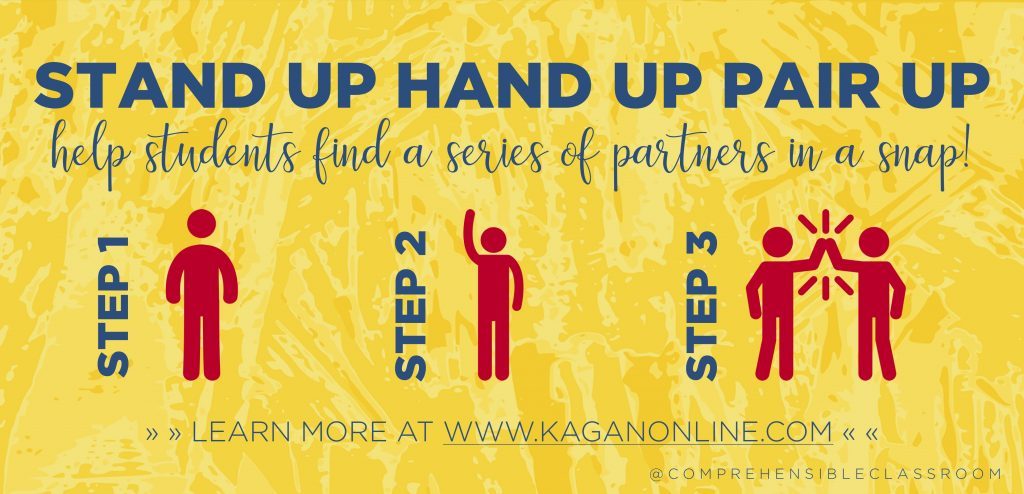One super simple, super fun engagement/cooperative learning strategy that Kagan provides is called, "stand-up hand-up pair-up." It's such a fun and easy way to get kids up and moving and its a structure that you can start implementing tomorrow!
1) Pose a question. Whether it be a math problem, or a reading comprehension question, or inquiry question leading into your science lesson. It' best to have the question displayed if possible. If not, I will repeat it multiple times.
2) Then you play some sort of music to signify its time to move. I use this timer countdown with music on YouTube: countdown timer, (you can click that link or just google it and there are SEVERAL other options). I tell them to stand behind their chairs and take their whiteboard/marker, their book, or paper pencil (whatever materials they may need to answer the question). Depending on the question, no materials may be needed at all.
3) When I pause the music, the kids freeze and immediately raise their hand in the air. They then have to partner with the person NEAREST to them and form a "partner pyramid" with their hands (this is just where they basically high five each other but hold it there in the air).
4) Any hands still raised in the air (means they don't have a partner) can look around for another hand in the air who doesn't have a partner, and thus they can easily find each other and partner up.
5) I will then delegate which partner shares first (either through use of the Kagan software "who's up?") or I'll just say something simple like "the partner whose birthday is up next shares first."
6) You can be done after the kids share, OR you can have the kids mix a few more times so that they get to share their answers with multiple partners. This is usually what I have them do. The more partners they share with, the more opportunities they have to practice speaking, in addition to hearing more diverse ideas from their peers.
Not only is this a SUPER quick, and efficient collaborative learning structure, this is also REALLY great support for your English Learners. This not only provides talk time, but you're also supporting them by giving them think time (time to process), time to verbalize their thoughts, and hear thoughts from their peers. This is why it's best to display the question and/or sentence frames when applicable to further support your English Learner students.
Furthermore, it gets the kids up and moving which then ensures that they're thinking and learning. It's easy, it's fun, and it supports ALL learners at ALL levels in your classroom!
Collaboratively Learning,



No comments:
Post a Comment